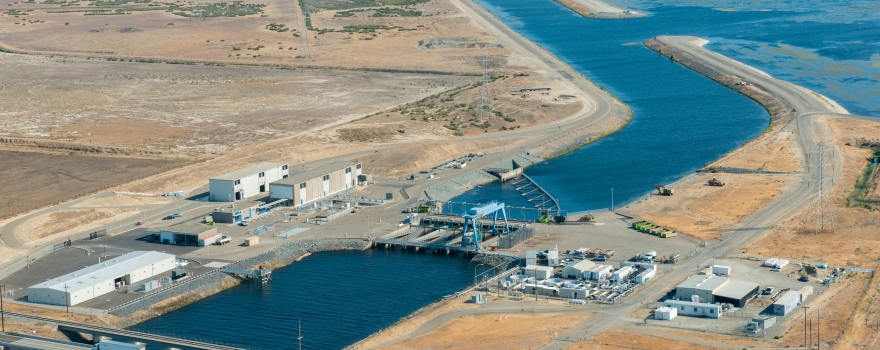 Water agencies request modifications to flow requirements, Delta Cross Channel operations and the export rate; outline possible future actions and factors to be considered during the year
Water agencies request modifications to flow requirements, Delta Cross Channel operations and the export rate; outline possible future actions and factors to be considered during the year
The Department of Water Resources and the Bureau of Reclamation have jointly filed a Temporary Urgency Change Petition with the State Water Resources Control Board requesting modifications for the next 180 days to the Bay-Delta requirements specified in the permits and license of the state and federal water projects. The petition filed details the requests for the months of February and March, and anticipates that a future request for the remainder of the water year will be submitted prior to April 1st.
Specifically:
“DWR and Reclamation request a Delta outflow of 4,000 cubic feet per second (cfs), a San Joaquin River at Airport Way Bridge, Vernalis river flow of 500 cfs, modifying the closure requirement of the Delta Cross Channel gates (DCC) to address Delta water quality concerns consistent with fish protections necessary as determined by the RTDOT, and a combined export rate that reflects an appropriate balance between competing beneficial needs in light of the drought. These changes will allow management of reservoir releases on a pattern that will conserve upstream storage for fish and wildlife protection and Delta salinity control while allowing for critical water supply needs exports.”
Critical operational considerations include providing for essential health and safety needs to the Central Valley Project and State Water Project service areas, reducing critical losses to agriculture, maintaining protections for endangered species and other fish and wildlife resources, providing water for wetlands and refuges, and maximizing operational flexibility within existing law and regulations.
As the dry conditions continue, continued operation of the state and federal water projects must provide for essential human health and safety needs throughout the service areas, while also retaining the capability to provide for such minimum needs in Water Year 2016 should drought conditions persist. The petition specifically states that these essential human health and safety needs include adequate water supplies for drinking, sanitation, and fire suppression, but do not extend to other urban demands, such as urban outdoor landscape irrigation.
Reclamation and DWR are currently preparing a biological review of the proposed changes for endangered species consultation purposes with the US Fish and Wildlife Service and the National Marine Fisheries Service; when those consultations are completed and the determinations made, DWR will then seek a consistency determination from the Department of Fish and Wildlife. The final consultation information will be submitted to the State Water Board when complete.
The petition also outlines the possible actions and factors that will be considered throughout the year, noting that the list is neither fully inclusive, nor intended to imply that the agencies will go forward with these actions. Those items include:
- Actions to develop cold water resources in reservoirs where temperature management is needed; this could include working with the Sacramento River Settlement Contractors to shift demand from early spring to later in the year to conserve the cold water pool in Shasta;
- Taking advantage of opportunities to export natural or abandoned flow in the winter and spring while maintaining Delta water quality and minimizing adverse effects to listed fish;
- Releasing stored water to concurrently benefit in-stream temperature objectives, wildlife objectives, meet Sacramento Valley in-basin needs, and preserve carry-over storage;
- Making water available from San Luis Reservoir for refuge needs when direct diversions from the Delta are not feasible;
- Transferring water from north of Delta refuges to south of Delta refuges to support priority habitat needs of south of Delta refuges;
- Installation of temporary Emergency Drought Barriers in the Delta to lessen water quality impacts will be considered if there is insufficient water in upstream reservoirs to repel saltwater and meet health and safety and other critical needs;
- Hatchery releases will be timed to coincide with favorable hydrologic conditions; acoustically tagged fish will be used to track their movement;
- Reclamation and DWR will continue to facilitate water transfers and exchanges;
- Releases from Trinity Reservoir may be considered to augment flows in the Lower Klamath River, consistent with fish health criteria.
Click here to read the petition.
Related:
 Get the Notebook blog by email and never miss a post!
Get the Notebook blog by email and never miss a post!
Sign up for daily emails and get all the Notebook’s aggregated and original water news content delivered to your email box by 9AM. Breaking news alerts, too. Sign me up!

